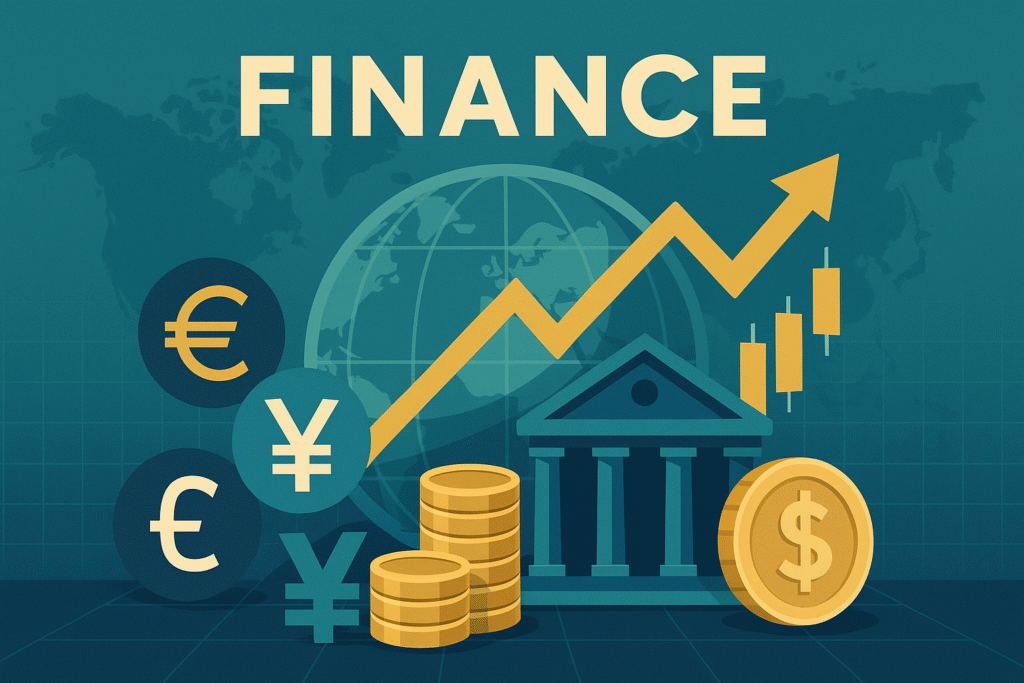The system that channels money from savers to users, manages risk, and prices future cash flows—thereby powering everything from household mortgages to trillion‑dollar infrastructure projects.

1. Three Core Pillars
| Pillar | Central Question | Typical Players |
|---|---|---|
| Personal Finance | How do individuals earn, spend, save and invest? | Consumers, advisers, robo‑platforms |
| Corporate Finance | How do businesses raise and allocate capital? | CFOs, investment banks, credit analysts |
| Public Finance | How do governments collect revenue and fund services? | Treasuries, central banks, multilateral lenders |
Taken together, these pillars keep capital circulating through the real economy.
2. The Financial Markets Ecosystem
First and foremost, markets transform idle cash into productive investment:
- Money Markets – Overnight lending ensures banks meet liquidity needs.
- Capital Markets – Stocks and bonds provide long‑term funding.
- Derivatives – Futures, options and swaps transfer price and rate risk.
- Foreign‑Exchange Market – Currency trades grease the wheels of global commerce.
- Alternative Assets – Private equity, real estate and crypto expand opportunity sets.
Consequently, price signals from these venues guide investment decisions worldwide.
3. Key Functions of Finance
- Capital Allocation – Interest rates and valuations steer money toward efficient projects.
- Risk Management – Insurance and derivatives repackage uncertainty into tradable contracts.
- Payment & Settlement – Banks, card networks and digital wallets move funds quickly and securely.
- Liquidity Provision – Market makers stand ready to buy or sell, thus keeping spreads tight.
Therefore, when finance works smoothly, the broader economy grows more steadily.
4. 2025 Market Pulse
| Segment | Metric | 5‑Year Trend |
|---|---|---|
| Global Equity Cap | US $109 trn | +46 % |
| Global Bond Market | US $136 trn | +29 % |
| Sustainable Debt | US $4 trn | +240 % |
| Fintech VC Funding | US $150 bn | –12 % after 2021 peak |
Although rates remain elevated, capital formation continues as green bonds and digital assets open new channels.
5. Emerging Themes to Watch
- Tokenisation of Real‑World Assets: Blockchains promise 24/7 settlement for bonds and funds.
- AI‑Driven Credit Scoring: Machine learning refines risk pricing yet raises fairness debates.
- Sustainable Finance Regulation: ISSB disclosures standardise ESG data, reshaping capital flows.
- Retail Investor Empowerment: Fractional shares and zero‑commission trading democratise access—though they also invite behavioural pitfalls.
Furthermore, central‑bank digital currencies (CBDCs) could redesign payment rails within five years.
6. Risks & Challenges
Nevertheless, finance is not without faults:
- Systemic Risk: Interconnected leverage can trigger cascading failures, as in 2008.
- Regulatory Arbitrage: Capital can shift to less‑regulated shadows, complicating oversight.
- Cybersecurity Threats: Digitalisation widens attack surfaces for fraud and ransomware.
- Inequality Concerns: Asset booms can outpace wage growth, widening wealth gaps.
Accordingly, policymakers and industry leaders must balance innovation with stability.
Key Takeaways
Finance funnels savings to productive use, prices risk, and underpins economic growth. Its architecture spans personal budgets to sovereign debt markets, while new technologies—from AI to tokenisation—promise greater efficiency. Even so, vigilance is required to manage systemic, cyber and social‑equity risks.